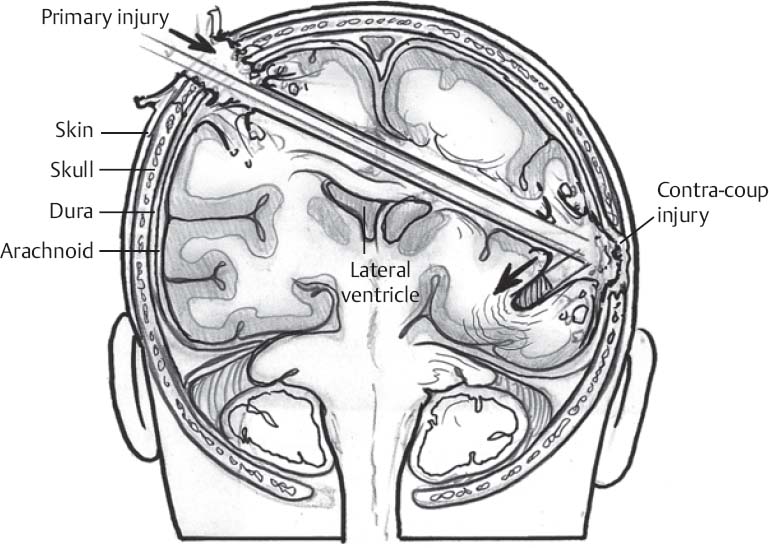The decision to operate on the patient with a missile injury to the brain requires careful consideration of the mechanism (gunshot wound, shrapnel, blast injury, etc.), the patient’s pre- and post-resuscitation Glasgow Coma Scale (GCS), and specific imaging findings (Fig. 71.1).
♦ Preoperative
- Careful assessment of the extent of injury including identification of all wounds, extent of skin damage, and proximity to dural sinuses
- Administration of tetanus vaccination
- Seizure prophylaxis, typically phenytoin or fosphenytoin load, 18 mg/kg
- Antibiotic prophylaxis with broad spectrum agent with good central nervous system penetration (e.g., ceftriaxone 1 to 2 g based on weight)
Operative Planning
- Goals of surgery areas follows:
- Débridement of devitalized tissue
- Removal of hematoma causing mass effect
- Removal of accessible bone fragments and foreign bodies (it is not necessary to remove inaccessible fragments at the expense of viable brain tissue)
- Hemostasis
- Adequate closure of dura if possible (autologous graft should be considered)
- Meticulous closure of galea and scalp
- Débridement of devitalized tissue
- Placement of external ventricular drain or intraparenchymal intracranial pressure (ICP) monitor in patients with GCS ≤ 8
< div class='tao-gold-member'> Only gold members can continue reading. Log In or Register to continue
Only gold members can continue reading. Log In or Register to continue
Stay updated, free articles. Join our Telegram channel

Full access? Get Clinical Tree






